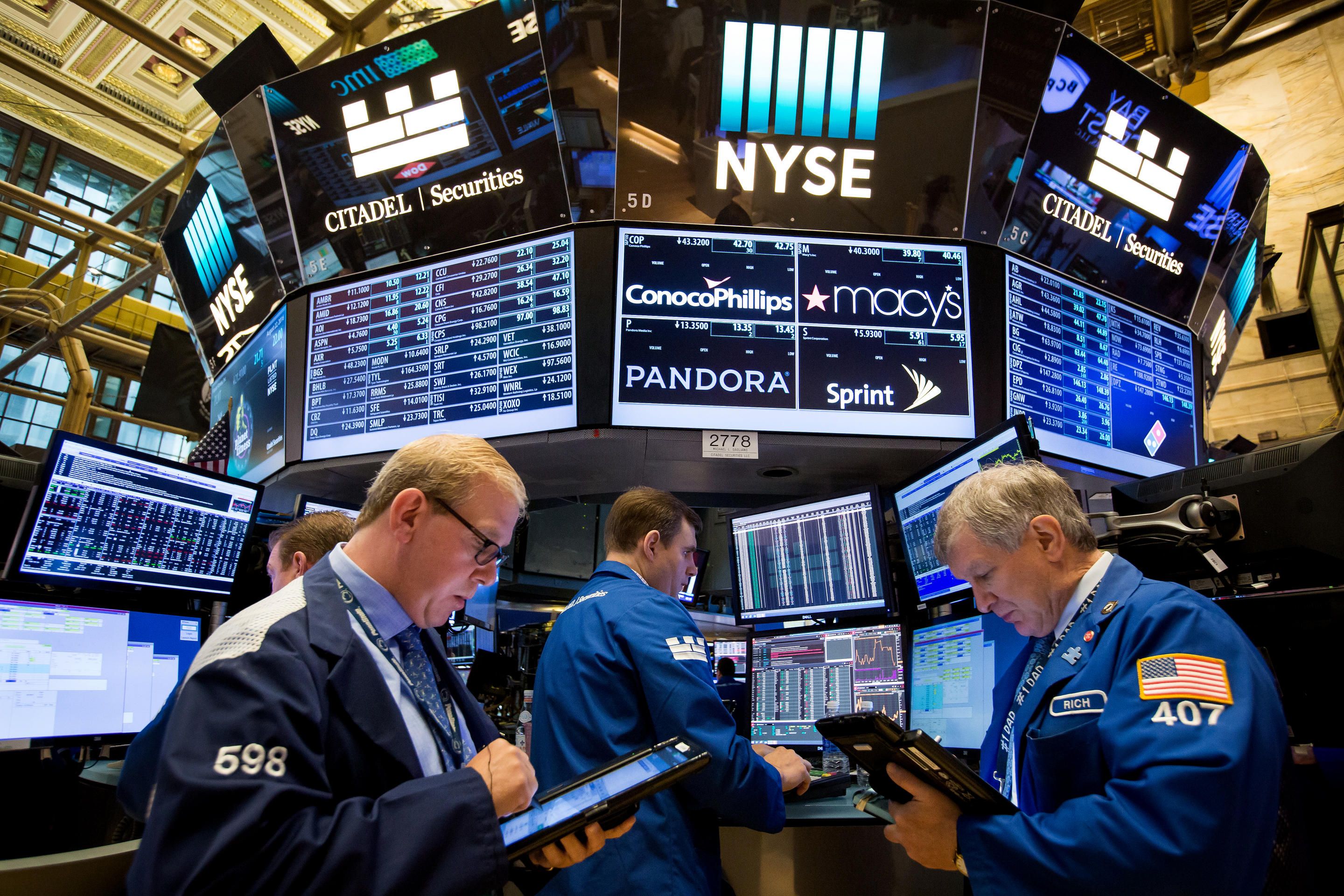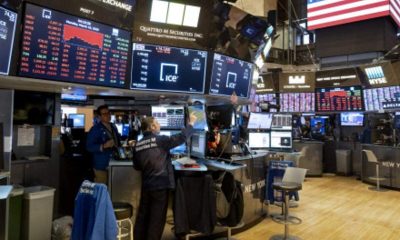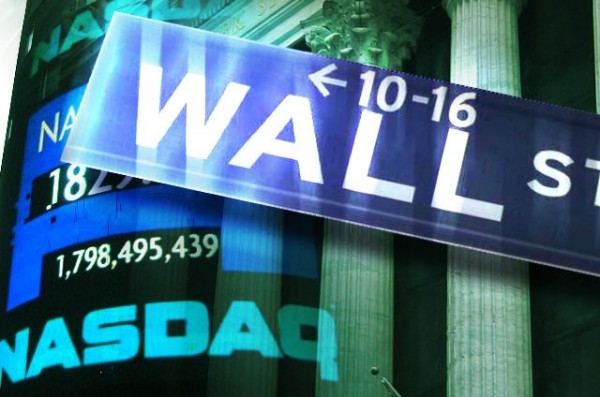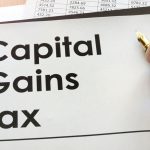Economy
American Stocks May Show Lack of Direction

By Investors Hub
The major U.S. index futures are pointing to a mixed opening on Friday following the strong upward move seen in the previous session. While the Dow futures are down by 45 points, the Nasdaq futures are up by 3 points.
Traders may be reluctant to make significant moves amid some uncertainty about the near-term outlook for the markets.
After moving lower over the two previous sessions, stocks showed a strong move back to the upside during trading on Thursday. With the upward move on the day, the Nasdaq reached a new record closing high.
The major averages ended the day firmly in positive territory. The Dow climbed 187.08 points or 0.8 percent to 23,458.36, the Nasdaq jumped 87.08 points or 1.3 percent to 6,793.29 and the S&P 500 advanced 21.02 points or 0.8 percent to 2,585.64.
The strength on Wall Street partly reflected a positive reaction to better than expected quarterly results from Wal-Mart (WMT) and Cisco Systems (CSCO).
Wal-Mart and Cisco surged up by 10.9 percent 5.2 percent, respectively, after both companies beat analyst estimates on both the top and bottom lines.
Stocks remained firmly positive after the House voted to approve the Republican tax reform bill, although final passage of legislation remains less than a certainty.
The House voted 227 to 205 in favor of their tax reform legislation known as the Tax Cuts and Jobs Act, with the vote coming down largely along party lines.
On the U.S. economic front, first-time claims for U.S. unemployment benefits unexpectedly increased in the week ended November 11th, according to a report released by the Labor Department.
The report said initial jobless claims rose to 249,000, an increase of 10,000 from the previous week’s unrevised level of 239,000. Economists had expected jobless claims to edge down to 235,000.
A separate report released by the Labor Department showed U.S. import prices rose by less than expected in the month of October.
The Labor Department said import prices rose by 0.2 percent in October after climbing by 0.8 percent in September. Economists had expected import prices to increase by 0.4 percent.
Meanwhile, the report said export prices were unchanged in October after increasing by 0.7 percent in the previous month. Export prices had been expected to climb by 0.4 percent.
Growth in Philadelphia-area manufacturing activity slowed by more than expected in the month of November, according to a report released by the Federal Reserve Bank of Philadelphia.
The Philly Fed said its diffusion index for current manufacturing activity in the region dropped to 22.7 in November from 27.9 in October.
While a positive reading still indicates growth in regional manufacturing activity, economists had expected the index to show a more modest decrease to 25.0.
The Federal Reserve also released a report showing industrial production in the U.S. increased by more than anticipated in the month of October.
The report said industrial production climbed by 0.9 percent in October after rising by an upwardly revised 0.4 percent in September.
Economists had expected production to rise by 0.5 percent compared to the 0.3 percent uptick originally reported for the previous month.
Additionally, the National Association of Home Builders released a report showing an unexpected improvement in homebuilder confidence in the month of November.
The report said the NAHB/Wells Fargo Housing Market Index rose to 70 in November from 68 in October. Economists had expected the index to be unchanged.
Computer hardware stocks showed a substantial move to the upside on the day, driving the NYSE Arca Computer Hardware Index up by 3.7percent.
NetApp (NTAP) led the hardware sector higher after the data storage company reported fiscal second quarter results that exceeded analyst estimates on both the top and bottom lines.
Significant strength was also visible among airline stocks, as reflected by the 2.3 percent gain posted by the NYSE Arca Airline Index. Hawaiian Airlines parent Hawaiian Holdings (HA) posted a standout gain.
Networking, retail, and biotechnology stocks also saw considerable strength, moving higher along with most of the other major sectors.
Economy
UK Backs Nigeria With Two Flagship Economic Reform Programmes

By Adedapo Adesanya
The United Kingdom via the British High Commission in Abuja has launched two flagship economic reform programmes – the Nigeria Economic Stability & Transformation (NEST) programme and the Nigeria Public Finance Facility (NPFF) -as part of efforts to support Nigeria’s economic reform and growth agenda.
Backed by a £12.4 million UK investment, NEST and NPFF sit at the centre of the UK-Nigeria mutual growth partnership and support Nigeria’s efforts to strengthen macroeconomic stability, improve fiscal resilience, and create a more competitive environment for investment and private-sector growth.
Speaking at the launch, Cynthia Rowe, Head of Development Cooperation at the British High Commission in Abuja, said, “These two programmes sit at the heart of our economic development cooperation with Nigeria. They reflect a shared commitment to strengthening the fundamentals that matter most for our stability, confidence, and long-term growth.”
The launch followed the inaugural meeting of the Joint UK-Nigeria Steering Committee, which endorsed the approach of both programmes and confirmed strong alignment between the UK and Nigeria on priority areas for delivery.
Representing the Government of Nigeria, Special Adviser to the President of Nigeria on Finance and the Economy, Mrs Sanyade Okoli, welcomed the collaboration, touting it as crucial to current, critical reforms.
“We welcome the United Kingdom’s support through these new programmes as a strong demonstration of our shared commitment to Nigeria’s economic stability and long-term prosperity. At a time when we are implementing critical reforms to strengthen fiscal resilience, improve macroeconomic stability, and unlock inclusive growth, this partnership will provide valuable technical support. Together, we are laying the foundation for a more resilient economy that delivers sustainable development and improved livelihoods for all Nigerians.”
On his part, Mr Jonny Baxter, British Deputy High Commissioner in Lagos, highlighted the significance of the programmes within the wider UK-Nigeria mutual growth partnership.
“NEST and NPFF are central to our shared approach to strengthening the foundations that underpin long-term economic prosperity. They sit firmly within the UK-Nigeria mutual growth partnership.”
Economy
MTN Nigeria, SMEDAN to Boost SME Digital Growth

By Aduragbemi Omiyale
A strategic partnership aimed at accelerating the growth, digital capacity, and sustainability of Nigeria’s 40 million Micro, Small and Medium Enterprises (MSMEs) has been signed by MTN Nigeria and the Small and Medium Enterprises Development Agency of Nigeria (SMEDAN).
The collaboration will feature joint initiatives focused on digital inclusion, financial access, capacity building, and providing verified information for MSMEs.
With millions of small businesses depending on accurate guidance and easy-to-access support, MTN and SMEDAN say their shared platform will address gaps in communication, misinformation, and access to opportunities.
At the formal signing of the Memorandum of Understanding (MoU) on Thursday, November 27, 2025, in Lagos, the stage was set for the immediate roll-out of tools, content, and resources that will support MSMEs nationwide.
The chief operating officer of MTN Nigeria, Mr Ayham Moussa, reiterated the company’s commitment to supporting Nigeria’s economic development, stating that MSMEs are the lifeline of Nigeria’s economy.
“SMEs are the backbone of the economy and the backbone of employment in Nigeria. We are delighted to power SMEDAN’s platform and provide tools that help MSMEs reach customers, obtain funding, and access wider markets. This collaboration serves both our business and social development objectives,” he stated.
Also, the Chief Enterprise Business Officer of MTN Nigeria, Ms Lynda Saint-Nwafor, described the MoU as a tool to “meet SMEs at the point of their needs,” noting that nano, micro, small, and medium businesses each require different resources to scale.
“Some SMEs need guidance, some need resources; others need opportunities or workforce support. This platform allows them to access whatever they need. We are committed to identifying opportunities across financial inclusion, digital inclusion, and capacity building that help SMEs to scale,” she noted.
Also commenting, the Director General of SMEDAN, Mr Charles Odii, emphasised the significance of the collaboration, noting that the agency cannot meet its mandate without leveraging technology and private-sector expertise.
“We have approximately 40 million MSMEs in Nigeria, and only about 400 SMEDAN staff. We cannot fulfil our mandate without technology, data, and strong partners.
“MTN already has the infrastructure and tools to support MSMEs from payments to identity, hosting, learning, and more. With this partnership, we are confident we can achieve in a short time what would have taken years,” he disclosed.
Mr Odii highlighted that the SMEDAN-MTN collaboration would support businesses across their growth needs, guided by their four-point GROW model – Guidance, Resources, Opportunities, and Workforce Development.
He added that SMEDAN has already created over 100,000 jobs within its two-year administration and expects the partnership to significantly boost job creation, business expansion, and nationwide enterprise modernisation.
Economy
NGX Seeks Suspension of New Capital Gains Tax

By Adedapo Adesanya
The Nigerian Exchange (NGX) Limited is seeking review of the controversial Capital Gains Tax increase, fearing it will chase away foreign investors from the country’s capital market.
Nigeria’s new tax regime, which takes effect from January 1, 2026, represents one of the most significant changes to Nigeria’s tax system in recent years.
Under the new rules, the flat 10 per cent Capital Gains Tax rate has been replaced by progressive income tax rates ranging from zero to 30 per cent, depending on an investor’s overall income or profit level while large corporate investors will see the top rate reduced to 25 per cent as part of a wider corporate tax reform.
The chief executive of NGX, Mr Jude Chiemeka, said in a Bloomberg interview in Kigali, Rwanda that there should be a “removal of the capital gains tax completely, or perhaps deferring it for five years.”
According to him, Nigeria, having a higher Capital Gains Tax, will make investors redirect asset allocation to frontier markets and “countries that have less tax.”
“From a capital flow perspective, we should be concerned because all these international portfolio managers that invest across frontier markets will certainly go to where the cost of investing is not so burdensome,” the CEO said, as per Bloomberg. “That is really the angle one will look at it from.”
Meanwhile, the policy has been defended by the chairman of the Presidential Fiscal Policy and Tax Reforms Committee, Mr Taiwo Oyedele, who noted that the new tax will make investing in the capital market more attractive by reducing risks, promoting fairness, and simplifying compliance.
He noted that the framework allows investors to deduct legitimate costs such as brokerage fees, regulatory charges, realised capital losses, margin interest, and foreign exchange losses directly tied to investments, thereby ensuring that they are not taxed when operating at a loss.
Mr Oyedele also said the reforms introduced a more inclusive approach to taxation by exempting several categories of investors and transactions.
-

 Feature/OPED6 years ago
Feature/OPED6 years agoDavos was Different this year
-
Travel/Tourism9 years ago
Lagos Seals Western Lodge Hotel In Ikorodu
-

 Showbiz3 years ago
Showbiz3 years agoEstranged Lover Releases Videos of Empress Njamah Bathing
-

 Banking7 years ago
Banking7 years agoSort Codes of GTBank Branches in Nigeria
-

 Economy2 years ago
Economy2 years agoSubsidy Removal: CNG at N130 Per Litre Cheaper Than Petrol—IPMAN
-

 Banking3 years ago
Banking3 years agoFirst Bank Announces Planned Downtime
-

 Banking3 years ago
Banking3 years agoSort Codes of UBA Branches in Nigeria
-

 Sports3 years ago
Sports3 years agoHighest Paid Nigerian Footballer – How Much Do Nigerian Footballers Earn
















